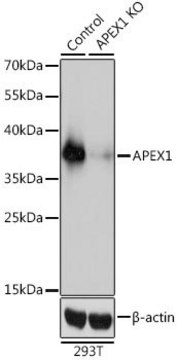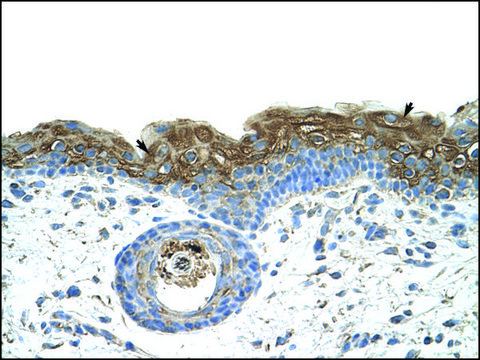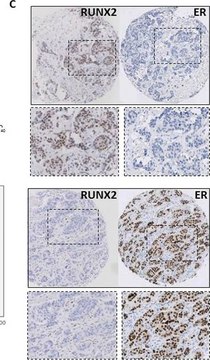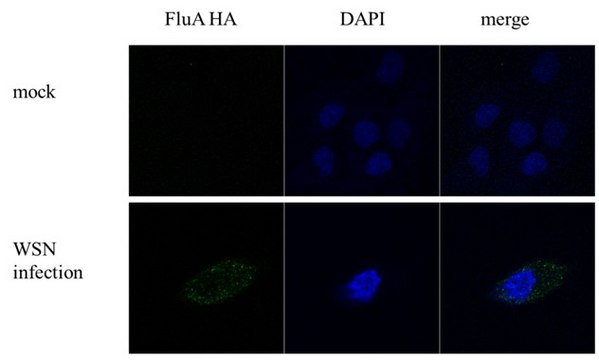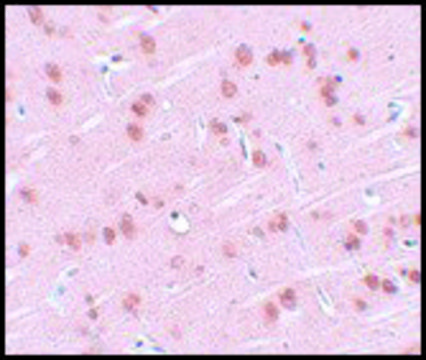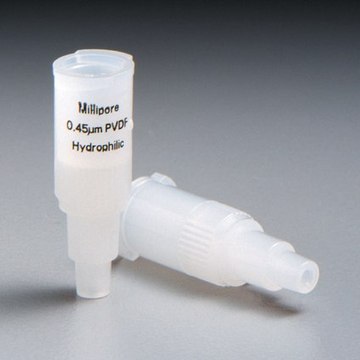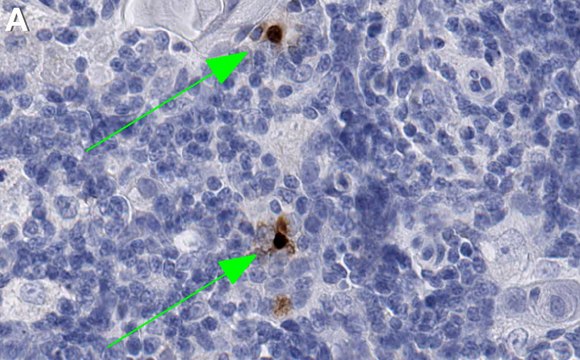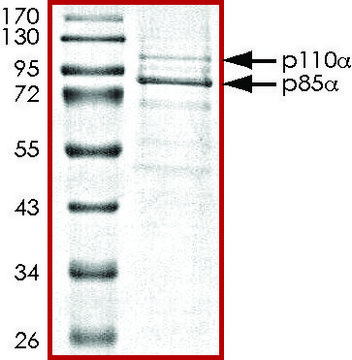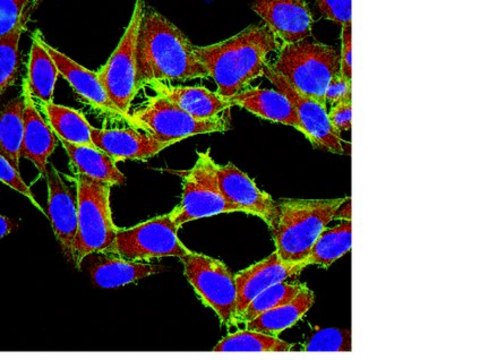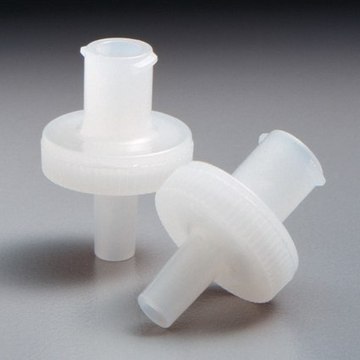SAB3500061
Anti-Swine H1N1 Hemagglutinin antibody produced in rabbit
affinity isolated antibody, buffered aqueous solution
Sign Into View Organizational & Contract Pricing
All Photos(4)
Synonym(s):
Anti-HA, Anti-S-OIV A Hemagglutinin, Anti-Swine flu H1, Anti-Swine-Origin Influenza A (H1N1) Hemagglutinin
Recommended Products
biological source
rabbit
Quality Level
conjugate
unconjugated
antibody form
affinity isolated antibody
antibody product type
primary antibodies
clone
polyclonal
form
buffered aqueous solution
species reactivity
viral
technique(s)
indirect ELISA: suitable
western blot: suitable
NCBI accession no.
UniProt accession no.
shipped in
dry ice
storage temp.
−20°C
target post-translational modification
unmodified
Immunogen
Hemagglutinin antibody was raised against a synthetic peptide from the novel swine influenza Hemagglutinin protein. The peptide sequence is unique from the peptide sequence for product SAB3500063 and SAB3500059. This antibody is a cognate pair with product SAB3500060.
Features and Benefits
Evaluate our antibodies with complete peace of mind. If the antibody does not perform in your application, we will issue a full credit or replacement antibody. Learn more.
Target description
Influenza A virus is a major public health threat, killing more than 30,000 people per year in the USA (1). In early 2009, a novel swine-origin influenza A (H1N1) virus was identified in specimens obtained from patients in Mexico and the United States (2). The virus spread quickly around the world and on June 11, 2009, the World Health Organization declared it a pandemic (3). Influenza A virus has one of sixteen possible Hemagglutinin (HA) surface proteins and one of nine possible Neuraminidase (NA) surface proteins. The Hemagglutinin protein facilitates viral attachment while Neuraminidase is involved in viral release. These proteins also elicit immune responses that prevent infection or independently reduce viral replication. The genetic make-up of this swine flu virus is unlike any other: it is an H1N1 strain that combines a triple assortment first identified in 1998 including human, swine, and avian influenza with two new pig H3N2 virus genes from Eurasia, themselves of recent human origin (4). The distinct antigenic properties of the new swine virus compared with seasonal influenza A (H1N1) virus suggest that human immunity against new swine influenza virus is limited, although the age distribution of reported cases suggests some degree of protection in older age groups (5). This antibody is specific for the novel swine influenza Hemagglutinin and will not recognize the corresponding Hemagglutinin sequence from the seasonal H1N1 influenza (A/Brisbane/59/2007 (H1N1)).
Linkage
The action of this antibody can be blocked using blocking peptide SBP3500061.
Physical form
Supplied at approx. 1 mg/mL in phosphate buffered saline containing 0.02% sodium azide.
Disclaimer
Unless otherwise stated in our catalog or other company documentation accompanying the product(s), our products are intended for research use only and are not to be used for any other purpose, which includes but is not limited to, unauthorized commercial uses, in vitro diagnostic uses, ex vivo or in vivo therapeutic uses or any type of consumption or application to humans or animals.
related product
Product No.
Description
Pricing
WGK
WGK 2
Flash Point(F)
Not applicable
Flash Point(C)
Not applicable
Regulatory Information
新产品
Certificates of Analysis (COA)
Search for Certificates of Analysis (COA) by entering the products Lot/Batch Number. Lot and Batch Numbers can be found on a product’s label following the words ‘Lot’ or ‘Batch’.
Already Own This Product?
Find documentation for the products that you have recently purchased in the Document Library.
Independent role of caspases and Bik in augmenting influenza A virus replication in airway epithelial cells and mice.
Soni, et al.
Virology Journal, 20, 78-78 (2023)
Our team of scientists has experience in all areas of research including Life Science, Material Science, Chemical Synthesis, Chromatography, Analytical and many others.
Contact Technical Service